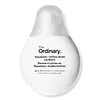What's inside
What's inside
 Key Ingredients
Key Ingredients

 Benefits
Benefits

 Concerns
Concerns

No concerns
 Ingredients Side-by-side
Ingredients Side-by-side

Squalane
EmollientSorbitan Olivate
EmulsifyingWater
Skin ConditioningTrihydroxystearin
Skin ConditioningBetaine
HumectantJojoba Esters
EmollientHelianthus Annuus Seed Wax
Skin ConditioningSodium PCA
HumectantPCA
HumectantSerine
MaskingAlanine
MaskingArginine
MaskingProline
Skin ConditioningGlycine
BufferingGlutamic Acid
HumectantLysine Hcl
Skin ConditioningThreonine
Sodium Lactate
BufferingAdansonia Digitata Seed Oil
EmollientCaprylic/Capric Triglyceride
MaskingAcacia Decurrens Flower Wax
EmollientPolyglycerin-3
HumectantHydroxymethoxyphenyl Decanone
Skin ConditioningTocopherol
AntioxidantCalcium Gluconate
HumectantGluconolactone
Skin ConditioningSodium Benzoate
MaskingSqualane, Sorbitan Olivate, Water, Trihydroxystearin, Betaine, Jojoba Esters, Helianthus Annuus Seed Wax, Sodium PCA, PCA, Serine, Alanine, Arginine, Proline, Glycine, Glutamic Acid, Lysine Hcl, Threonine, Sodium Lactate, Adansonia Digitata Seed Oil, Caprylic/Capric Triglyceride, Acacia Decurrens Flower Wax, Polyglycerin-3, Hydroxymethoxyphenyl Decanone, Tocopherol, Calcium Gluconate, Gluconolactone, Sodium Benzoate
Hydrogenated Polyisobutene
EmollientDiphenylsiloxy Phenyl Trimethicone
Skin ConditioningPetrolatum
EmollientLanolin
EmollientPolyethylene
AbrasiveIsotridecyl Isononanoate
EmollientEthylhexyl Methoxycinnamate
UV AbsorberParaffinum Liquidum
EmollientMicrocrystalline Wax
Emulsion StabilisingSodium Acetylated Hyaluronate
HumectantSoluble Collagen
HumectantAloe Barbadensis Leaf Extract
EmollientSqualane
EmollientHoney
HumectantSodium Hyaluronate
HumectantWhey
Skin ConditioningElaeis Guineensis Kernel Oil
EmollientTocopheryl Acetate
AntioxidantWater
Skin ConditioningButylene Glycol
HumectantDipropylene Glycol
HumectantButyl Methoxydibenzoylmethane
UV AbsorberPolyglyceryl-4 Oleate
EmulsifyingParfum
MaskingHydrogenated Polyisobutene, Diphenylsiloxy Phenyl Trimethicone, Petrolatum, Lanolin, Polyethylene, Isotridecyl Isononanoate, Ethylhexyl Methoxycinnamate, Paraffinum Liquidum, Microcrystalline Wax, Sodium Acetylated Hyaluronate, Soluble Collagen, Aloe Barbadensis Leaf Extract, Squalane, Honey, Sodium Hyaluronate, Whey, Elaeis Guineensis Kernel Oil, Tocopheryl Acetate, Water, Butylene Glycol, Dipropylene Glycol, Butyl Methoxydibenzoylmethane, Polyglyceryl-4 Oleate, Parfum
 Reviews
Reviews

Ingredients Explained
These ingredients are found in both products.
Ingredients higher up in an ingredient list are typically present in a larger amount.
Squalane is an emollient that helps the skin hold onto moisture. It's an oily liquid that occurs naturally in certain types of fish and plant oils.
Because squalane boosts hydration in the skin, it also comes with plenty of benefits: it is an antioxidant and can help fight free radicals and skin damage. Squalane is also found to have a detoxifying effect when applied.
Squalane comes from squalene, which occurs naturally within the sebum of our skin. It is one of the oils our skin produces to keep itself hydrated. Squalane is the hydrogenated version of squalene and has a longer shelf life.
Research shows that squalane is non-irritating (even at 100% concentration).
In general, it's a fantastic ingredient. It does a great job at hydrating the skin, and it's suitable for those with sensitive skin.
The source of squalane may impact malassezia / fungal acne. This is because olive oil derived squalane can contain impurities such as fatty acids and plant waxes. Sugarcane derived squalane is recommended for anyone with malassezia concerns.
Is squalane vegan?
This depends on the source. Squalane can be derived from both plants and animals. Most squalane used in skincare comes from plants.
Please note: the source of squalane is only known if disclosed by the brand. We recommend reaching out to the brand if you have any questions about their squalane.
Read more about squalene with an "e".
Is squalane an oil?
Squalane is often called an oil, but it’s technically not; it’s a hydrocarbon, meaning it’s only made of carbon and hydrogen, unlike true oils which are triglycerides made of fatty acids and glycerol.
The term “oil-free” isn’t regulated, so companies can define it however they want. Some exclude all oils, while others just avoid mineral oil or comedogenic oils.
While some people avoid oils thinking they cause breakouts, the right kind of oil (or oil-like ingredient like squalane) can actually help balance and hydrate your skin. It’s worth testing out simple oils or squalane to see what works best for your skin.
Learn more about SqualaneWater. It's the most common cosmetic ingredient of all. You'll usually see it at the top of ingredient lists, meaning that it makes up the largest part of the product.
So why is it so popular? Water most often acts as a solvent - this means that it helps dissolve other ingredients into the formulation.
You'll also recognize water as that liquid we all need to stay alive. If you see this, drink a glass of water. Stay hydrated!
Learn more about Water